High quality hiking base layers are these days made either of polyester or Merino wool and online you will find a lot of information about these two materials, especially pros and cons. Polyester is labeled as quick-drying, durable, light and cheap while Merino wool is considered breathable, pleasant to the touch and extremely moisture-wicking. Many articles, including those from reputable sources such as REI, state that polyester dries much faster than Merino wool. But is this really true? We decided to conduct an experiment where we investigated the drying time of four different base layers (made of Merino wool, polyester and blend of different fibers) and below is what we learned.
Table of Contents:
- Which garments did we test?
- How did we conduct the experiment?
- Drying time results
- The bottom line on the results
- Why is drying time so important?
Which garments did we test?
For this experiment we used four different base layers; Woolly Ultralight Crew Neck t-shirt, Under Armour t-shirt, Icebreaker Tech T Lite t-shirt and Klattermusen Eir t-shirt. All t-shirts were in the same size and weighed approximately 120 grams. Therefore, we can safely assume that all t-shirts had a very similar fabric density. Note that the drying time of a garment depends on the fabric density (the thicker the garment, the longer it takes to dry), which is why it is important that the tested t-shirts were of a similar density.
Tested Garments & Materials:
- Woolly Ultralight Crew Neck t-shirt (100% Merino Wool)
- Under Armour t-shirt (100% Polyester)
- Icebreaker Tech T Lite (87% Merino Wool, 13% Nylon)
- Klattermusen Eir (70% Merino Wool, 30% Silk)
How did we conduct the experiment?
To get reliable results we machine washed all four garments so that no garment was more soaked than the other. Immediately after washing the garments we hanged them outside to dry. The temperature was 30 C (86 F) and the wind speed was 6 km/h. According to the weather forecast the humidity was 53% while the weather was partly cloudy. All garments were exposed to the same amount of sun (no garment was left hanging in the shade). After all garments dried on one side we turned them around to dry them (faster) on the other side too. After the garments were drying for 15 minutes, we checked them every couple of minutes to see how dry they were.
Drying time results
| Garment | Material | Drying Time |
|---|---|---|
| Woolly Ultralight Crew Neck | 100% Merino Wool | 48 minutes |
| Under Armour | 100% Polyester | 34 minutes |
| Icebreaker Tech T Lite | 87% Merino Wool, 13% Nylon | 34 minutes |
| Klattermusen Eir | 70% Merino Wool, 30% Silk | 50 minutes |
As we see in the table above, the Under Armour t-shirt and the Icebreaker t-shirt dried the fastest – they were completely dry after drying for 34 minutes. The Under Armour t-shirt is made of 100% polyester while the Icebreaker t-shirt is made of blend of Merino wool and nylon fibers (87% Merino wool, 13% Nylon).
Despite the high content of Merino fibers, the Icebreaker t-shirt dried as fast as the 100% polyester Under Armour t-shirt. So, does polyester really dry faster than Merino wool? Usually yes, but not necessarily. The reason that the Icebreaker t-shirt dried so fast is probably the porosity of the fabric. The Icebreaker t-shirt is made of a very porous fabric while the Under Armour t-shirt has a relatively tightly woven fabric. Therefore, the moisture can dissipate from the Icebreaker t-shirt faster than from the Under Armour t-shirt. However, the Icebreaker t-shirt absorbs more moisture due to the Merino fibers and therefore the two t-shirts ended up having the same drying time.
The Woolly and the Klattermusen t-shirts took longer to dry – the Wooly t-shirt was completely dry after 48 minutes while the Klattermusen t-shirt was completely dry after 50 minutes. Both t-shirts are made of a quite tightly woven fabric and that is probably the reason for longer drying time. While the Wooly t-shirt is made of 100% Merino wool, the material of the Klattermusen t-shirt features 70% Merino wool and 30% silk fibers. Since the drying time was so similar, we can tentatively conclude for this experiment that silk fibers absorb as much moisture as the Merino fibers.
The bottom line on the results
This experiment revealed that a Merino base layer with even a low percentage of synthetic fibers mixed in can dry as fast as a pure polyester base layer. However, most polyester garments do dry faster than Merino garments, simply because polyester absorbs much less moisture. Furthermore, polyester can also be knit in an even thinner fabric than Merino wool as it is a more durable fiber.
In general, we don’t think that you should avoid Merino wool because of its drying time as it might very well be possible that a Merino shirt you have your eyes on dries faster than your synthetic shirt. It is better that you think about whether you prefer odor-control and comfort rather than durability and a lower price. If you want the former, go for Merino wool and if you prefer the latter, go for a polyester t-shirt. To learn more about these two materials read our article Polyester vs. Merino Wool.
Why is drying time so important?
There are three reasons why you should wear quick-drying clothes for hiking; wet clothes will make you feel cold, they will chafe you skin and will be heavy to wear.
Note that water has a considerably higher heat conductivity than the air and therefore the body loses heat much faster when it is covered with wet clothes than with dry. If your clothes are wet, also the friction between the clothes and the skin increases which can lead to chafing. Some clothes (namely those made of cotton) absorb a lot of moisture and thus they become heavy to wear when soaked with sweat or precipitation.
What is your experience with Merino wool and polyester in terms of drying time? Write it the comments below.
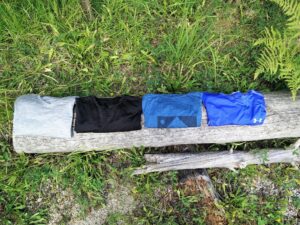
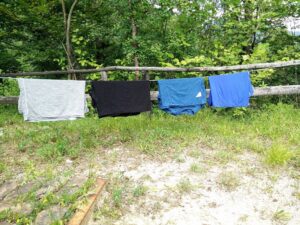


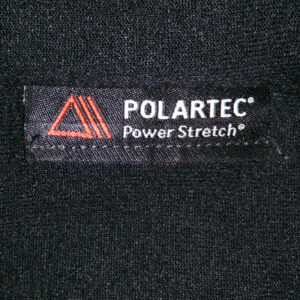

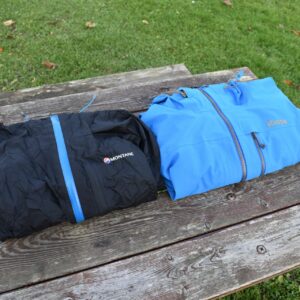
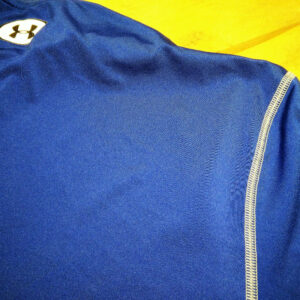
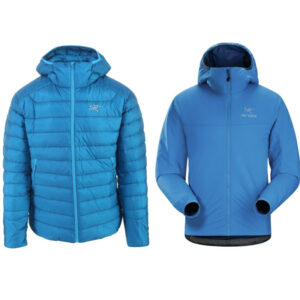


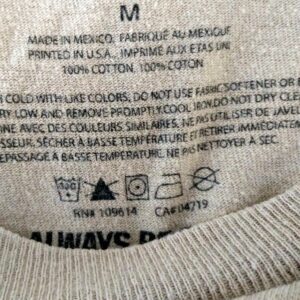
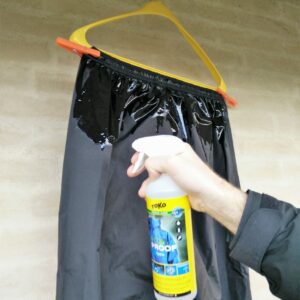












Hey, Blaz! Great experiment. The only issue is that moisture retention of each material is vastly different so your results aren’t consistent. Synthetics can only absorb/retain about 1-5% of their weight in water whereas merino wool can absorb/retain up to 30-35% of its weight in water. Therefore to make the experiment legit, you’ll need to ensure that each garment has absorbed the same amount of water before timing how long it takes to dry (in this case about 1-5%/weight since synthetics can only absorb that much). I don’t know how to do the math, but given the results you got, the merino wool had to “dry” more moisture than the polyester. Assuming maximum moisture retention of the polyester (5%) and merino wool (35%), the merino wool dried 30% more moisture but only needing 14 more minutes to do so…that could be a faster drying time than polyester.
Hi Chad,
yes, the fabrics (polyester, Merino wool etc.) differ in moisture retention. However, I don’t see the point of ensuring that each garment has absorbed the same amount of water. When you are wearing the garment on a trail, it will absorb as much moisture (sweat) as it can. So, the merino wool will also have to “dry” more moisture than the polyester in real life 🙂 My goal was to figure out how fast various garments dry after they’ve been completely soaked 🙂 That’s the important thing when it comes to activities such as hiking and mountaineering because wet clothes conduct heat much faster than dry clothes.
I think Chad has a point. Considering that you are not sweating untill the fabric is completely soaked. Otherwise when it rains, you will in most cases not get completely soaked either. Instead your clothing would be exposed to the same amount of water in the given situation. That being said, the wool has a higher moisture retentive capacity so it will eventually be able to ‘get wetter’ if you will. Polyester on the other hand would let the excess moisture get through as it does not retain it, so by that time your body starts to get wet. I must say that I am not in any way an expert though. However, I’ve read that wool also keeps you warm 80% of its full capacity when completely soaked.
Hi Otto,
I agree. The experiment above is only valid if the clothes are completely soaked. For example, if we disperse 400 ml of water (I’m guessing the amount) on a Merino t-shirt and a Polyester t-shirt, the Merino t-shirt would probably not get soaked to its full capacity while the polyester t-shirt would. Therefore, the Merino t-shirt would dry faster than in the experiment above. It’s a valid point. During intensive activities you often get completely soaked in some areas such as back (especially if you are carrying a backpack) while other areas stay drier, depending on weather conditions, clothing system and many other factors. It would indeed be interesting to do more tests. Thanks for sharing your thoughts.
Regards,
Blaz